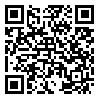BibTeX | RIS | EndNote | Medlars | ProCite | Reference Manager | RefWorks
Send citation to:
URL: http://rehabilitationj.uswr.ac.ir/article-1-221-en.html
Objective: The goal of this study was to determine effectiveness of Bobath, conductive education (CE) and education to parents on activity daily living (ADL) in educable children with cerebral palsy, 3-5 years old.
Materials & Methods: This research was a Quasi-experimental and interventional with pre - post study design that performed on 45 children with cerebral palsy from Valyasr rehabilitation foundation clinics. They were selected by simple sampling and matched from sex, age, IQ and disorder type and were assigned to three groups by simple randomize method (15 Bobath, 15 CE, 15 education to parents). Clinical tests were goodenough and client development evaluation report (CDER). The data were analyzed by statistical tests such as Wilcoxon signed, Kruskal-Wallis and Mann-whitney U.
Results: Three groups had significant improved in activity of daily living (ADL) after treatment (P<0/001). There was significant difference in total function of activity of daily living between three groups after treatment (P<0/001). The most effective approach was conductive education (CE), then education to parent and Bobath There were significant relations between function difference of three groups in 13 sub tasks of 17 ADL subtasks (P<0/05).
Conclusion: Bobath, conductive education (CE) and education to parent’s approaches improve skills of activity of daily living, but in CE approach, group educations causes better improvement in social communication and practical educations and programs increase improvement of ADL skills.
Received: 3/11/2008 | Accepted: 12/10/2015 | Published: 12/10/2015
| Rights and permissions | |
 |
This work is licensed under a Creative Commons Attribution-NonCommercial 4.0 International License. |





